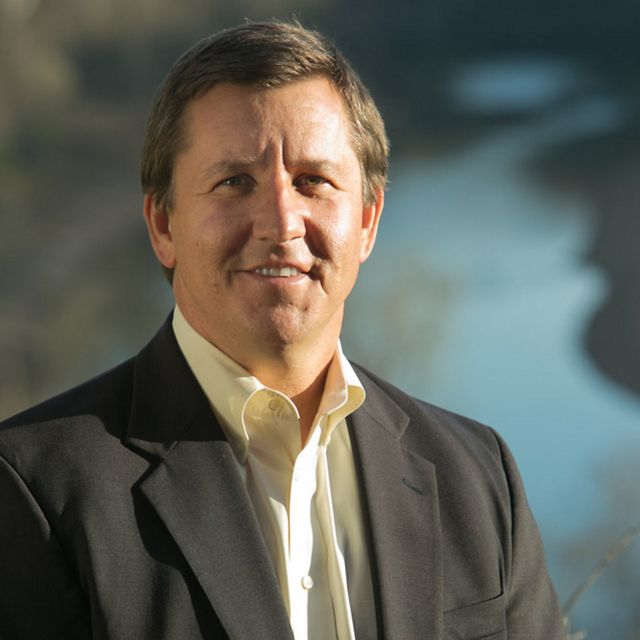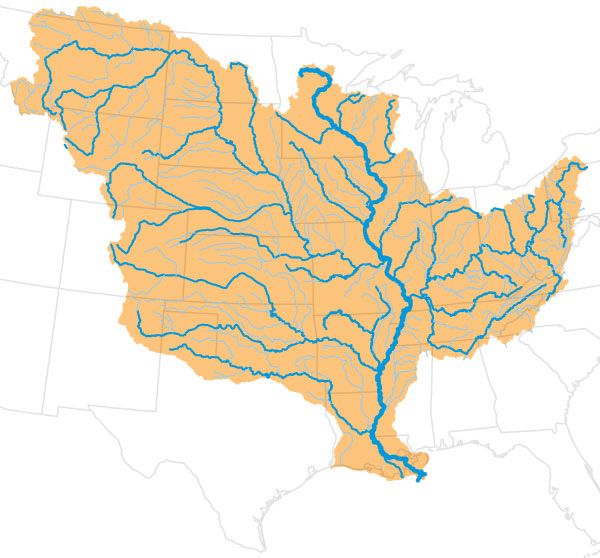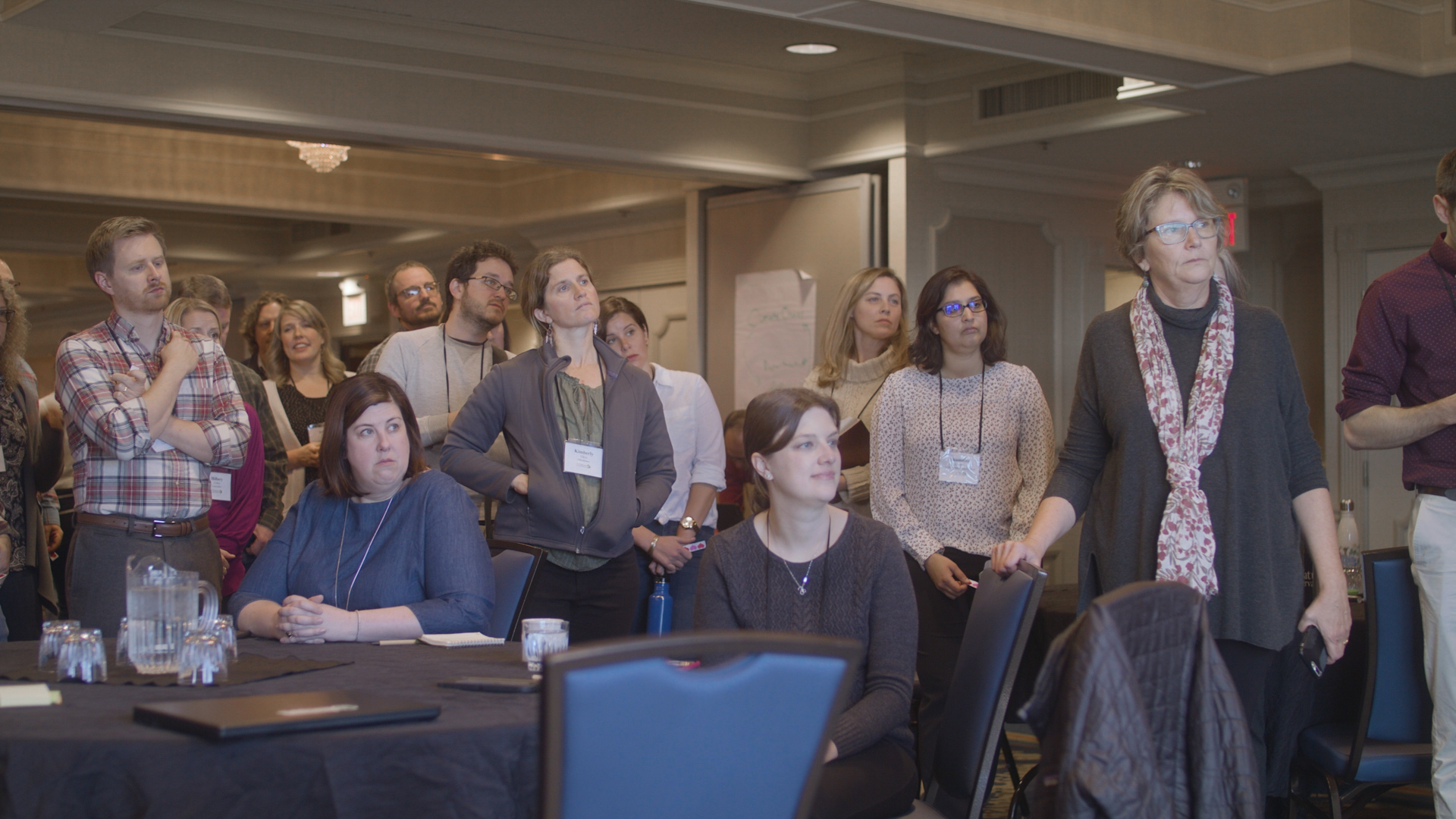
by Peter Senge
In hindsight, the launch phase was a cold dose of reality therapy. It made it hard to romanticize about collaboration and not acknowledge just how far away the organization actually was from doing it effectively.

Michael Reuter, then Director of NA Freshwater Program and now Midwest Division Director of TNC
Michael Reuter who had been in TNC for over two decades, saw the breakdowns as an old pattern: “TNC had been struggling for a long time trying to figure out how to work with whole systems. We had terrific projects… but typically they were kind of disconnected from basic focus of our state chapters (and) tended to be a competing priority… We were working on a big grant from Monsanto from 2009, $5 million, to work on nutrient loading in the Upper Miss that involved five different state projects to which the money was sent… (with these sorts of projects) there’s always tension in the organization. Priority setting comes out of local perspectives, but nutrient work has to come partly out of work in places like Iowa to impact what’s downstream… We were up always against a state by state perspective—‘what’s in it for me?’” Larry Clemens, then North America Agriculture director, now Indiana State Director, recalls “one state director saying, ‘This is not in our portfolio…’ This response was fairly typical then… This was a pivotal “aha” moment, exposing that we weren’t thinking systemically at all.”
Signs of starting to dissolve the stalemate of local control versus whole systems projects started to emerge in the next stage of the journey– and, ironically, they came from embracing the very source of “embarrassment” Reuter sensed driving emotions in the closing meeting.

After a launch meeting in October 2014 where the team agreed on a scope expanded to the whole Mississippi basin and identified three work streams – governance, marketing/fundraising, and systems mapping – the next major team meeting was in Jackson, Mississippi, in January 2015. At Conversant’s recommendation, the 22 participants worked with a facilitated system mapping process that became a tool for confronting directly the complexity of what they had undertaken. A subset of the team had worked in advance to develop the basic map based on interviews both within TNC and with key external partners like EPA, USGS and NRDC. The map was organized around the core goal of enhancing water quality for the entire Mississippi basin and reducing the hypoxic zone and what would need to be taken into account, TNC processes as they interacted with the environmental and economic systems, to make progress on that aim.
Reuter says, “because we were talking about all the aspects of the Mississippi basin, we never got to a place (where people said) that’s the system I see. The second round focused on a nutrients goal to create something all could support.” “The Jackson meeting was a real inflection point,” says Phil Tabas, a lawyer by training and a 35-year veteran of TNC who specializes in land use planning. “It was the first moment in TNC’s history when systems thinking was used in addressing a conservation problem”.
What that meant specifically was working with two facilitators to see how the facets of the system each knew best connected with facets others knew. This meant treating topsoil quality and nutrient retention, water, farming practices, feedlot throughput, water retention and drainage, nutrient application and retention, habitat conservation, and food production and resilience on equal footing with TNC project design and execution, governance, building strategic private-sector partnerships, influencing state and federal policy, the quality of public-private partnerships, ability to align private and public funding, the quality of state chapter alignment, and conservation science and data quality. In short, when looked at in total – even in a simplified map – it was far more than anyone could ever fully understand.
Though they all knew the map was simplified version of the reality they dealt with every day, seeing 145 variables and all the ways they affect one another had a visceral impact. “That was a meeting where people let go,” said Davis (they realized that this was) not about linear smart goals and org charts, which was how TNC did most of its conservation planning at the time.” Tabas added, “In the past, we thought that all we had to do was assign resources to a bigger version of a problem. MsB was the first to do this differently.” “Everyone agreed… (that the approach now) has to be more emergent,” said Reuter “… we focused on (a few key) levers and knew we would have to adjust regularly”.
Together, the team identified 3 broad areas of possible focus, which became their first hypothesized “leverage points” for going forward: targeting key geographies and solutions, growing the quality and quantity of whole-systems champions and advisors, especially those external to TNC to have greater system-wide impact, and the ability to fund systemically (as opposed to traditional chapter focused project funding).
The ongoing work on enhancing the team’s capacity for more productive conversations was also starting to show. Gradually, TNC’s traditional culture center of gravity on rational analysis and tactical execution was shifting to also value the inter-personal.

Photo: Jason Whalen, Fauna Creative
The synergy with the systems mapping was especially important. Partly what allowed the team to “let go” of their felt need to figure it all out was the deeper listening they had been practicing, which both helped them realize how different people really saw different parts of the complexity and built confidence that would be able to learn together moving forward. The team was “studying the complexity of understanding complex systems,” says Reuter. In Hack’s words, “face-to-face relationships” were starting to be seen as “increasingly important.” Even newcomers to the process were seeing the rationale of the conversation work: “I remember initially spending a lot of time doing the Conversant training and… (though) I was intrigued by the approach, especially the legitimacy that was given to each person’s point of view,” said Adam McLane, Missouri State Director, “at the same time, I was a bit resistant because it seemed like we were wasting time with all this listening stuff. It took me a while… (but) eventually I saw that the ‘room’ is smarter than me.”
Coming out of the Jackson meeting, things were shifting, and the feeling was palpable. “Unlike our earlier meetings,” said Reuter, “(we) broke through in terms of the way we work with each other. Most people felt collegiality and connection to the team and there were ambitious work plans coming out of that which charted the next steps. We suddenly had momentum we didn’t have in the past.” “After Jackson,” says Tabas, “we hung onto our global overarching priority to let go in the project and say we have to figure out for ourselves what makes sense for the system (and) then align with how to make larger decisions together.”
Scott Davis, another TNC veteran (and then Central Division Conservation Director), wanting to capture the core insights from Jackson and share with others who had not been there, sent an email “to update you all on what I thought was a fascinating discussion around strategy in Jackson, MS last week… The most important thing I heard during those several days was an early discussion around simple, complicated, complex and chaotic systems (see above)… an excellent framework[1] from which to think about TNC’s evolution as an organization.” Davis went on to characterize TNC’s evolution of the previous decades as moving from simple to complicated systems, illustrated by its capacity to address larger spatial scale and work with more diverse partners: “social, political and economic considerations slowly crept into the calculus… Lots more moving parts – a lot more variables – but at some level the complexity was capped by the state boundaries.” Now, he saw something different emerging for the Mississippi Basin Program that would trigger another stage in evolution.

Backwaters
“Conservation science kept pushing us, and eventually we began to realize – that on occasion – we needed to think and act in a coordinated/integrative and collaborative way at ecological, political, social and economic scales that exceed our individual Chapter boundaries… the number of moving parts and variables has gone up maybe exponentially – and more importantly – we can’t even predict or control many of them.” This is the reality, he went on, “of a complex system – a system where it is nearly impossible to simply create a plan and implement it. These are systems that require constant adaptation and adjustment. You not only have to be comfortable with ambiguity – you almost need to embrace it as some sort of opportunity generator…
“And herein lies our challenge,” Davis concluded. “Many of us are still living and working in a complicated world… The ‘strategies’… coming out of Jackson were not what I expected. Basically, I expected strategies that would line up with my complicated system mindset. ‘Just tell me where to put the 4R Nutrient Management Programs or where the Nutrient Utility and/or two stage ditches need to be… We’ll do that and the problem will be solved.’ That is not what we got.”
The fundamental problem, as Davis was now seeing it, was that “we will probably not be successful if we try to apply solutions that work in simple or complicated systems to something as complex as the MS and the development of an intra-Conservancy wide strategy around nutrient loading in the Gulf. This has been part of my problem – I’ve tried to solve this problem in a way that really isn’t appropriate to system – and honestly it has felt a little like sticking a square peg in a round hole. Now I understand why… If at least some of our senior management can’t find a way to operate in a complex system – we will fail. We will fail in our mission, we will fail our donors and we will fail those that come after us. As good as our work in a State based complicated system is – it is not – in my opinion – enough.”
After summarizing the three broad leverage points arrived at in Jackson, Davis said this means a fundamental rethinking of “governance strategy,” the working group he represented. “Although we will still need points of accountability in the system to move things forward when they are stuck – that won’t be the backbone or the bulk of a governance strategy… (instead) the quality of the collaboration and integration is key (and) how we maintain that collaboration over time and in a world where things are in constant flux… We’re going to have to design an approach that is as adaptable as the world we’re trying to work in”.
[1] The framework called Cynefin (a Welsh term for habitat) comes from David Snowden: Snowden, David J.; Boone, Mary E. (November 2007). “A Leader’s Framework for Decision Making”. Harvard Business Review, 69–76.
